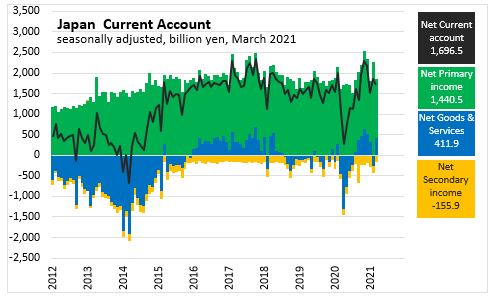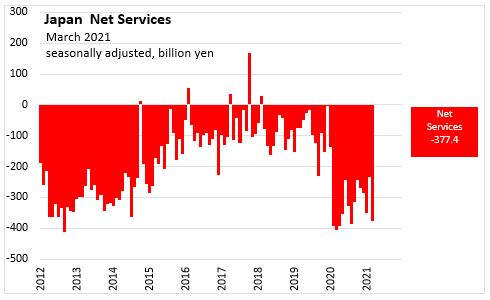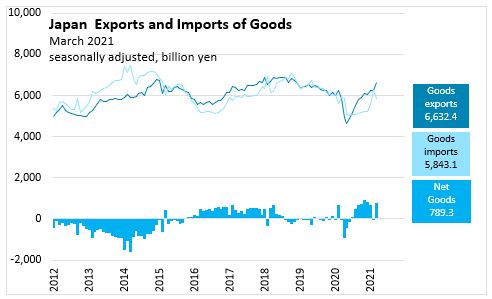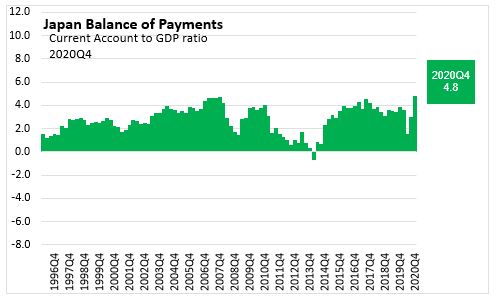The Economics and Statistics Division maintains archives of previous publications for accountability purposes, but makes no updates to keep these documents current with the latest data revisions from Statistics Canada. As a result, information in older documents may not be accurate. Please exercise caution when referring to older documents. For the latest information and historical data, please contact the individual listed to the right.
<--- Return to Archive
For additional information relating to this article, please contact:
May 13, 2021JAPAN CURRENT ACCOUNT AND TRADE BALANCE, MARCH 2021 
Current Account (March 2021 vs February 2021)
The current account surplus narrowed by 148 billion yen to 1,697 billion yen.
The goods and services trade changed from a deficit (250 billion yen) to a surplus (412 billion yen).
The primary income surplus narrowed by 835 billion yen to 1,441 billion yen.
The secondary income deficit narrowed by 25 billion yen to 156 billion yen.
Trade Balance (March 2021 vs February 2021)
Japan's goods trade changed from a deficit (15 billion yen) to a surplus (789 billion yen)
- Exports of goods increased 379 billion yen to 6,632 billion yen
- Imports of goods decreased 425 billion yen to 5,843 billion yen
Net Services trade deficit widened by 142 billion yen to 377 billion yen


CURRENT ACCOUNT AS A SHARE OF GDP (2020Q4 over 2020Q3)
Japan's current account surplus (as measured as a share of GDP) widened 1.8 percentage points to 4.8%.

Note: 2021Q1 data is unavailable at this time.
The ratio of the current account balance to the Gross Domestic Product (or % of GDP) provides an indication of the country's trade and income flows relative to the size of the economy. The ratio is calculated by dividing the net values of exports less imports, primary Income (interest and dividends) and secondary income (transfers) over a period by the gross domestic product for the same period. Although called a ratio, it is usually expressed as a percentage. A current account surplus indicates upward pressure on the foreign exchange rate unless it is offset by net outflows (leading, acquisition of assets) outside the country.
REFERENCES
Report | Press Release | Balance of Payments
Based on Table 6s-a-2 Current Account (seasonally adjusted), Monthly
OECD, Quarterly balance of payments statistics
<--- Return to Archive